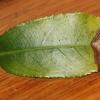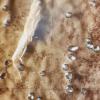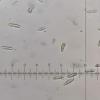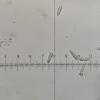
28-11-2025 16:45
Nogueira HéctorNovember 23, 2025 Requejo de Sanabria (León) SPAI

25-11-2025 14:24
Thomas Læssøehttps://svampe.databasen.org/observations/10490522

17-09-2025 10:50
Heather MerryleesHi there!I am hoping for any advice on the identif

27-11-2025 15:41
Thomas LæssøeSpores brownish, typically 4-celled; 26.8 x 2.4;

27-11-2025 12:01
Thomas Læssøehttps://svampe.databasen.org/observations/10496727

27-11-2025 11:46
Thomas Læssøehttps://svampe.databasen.org/observations/10493918

27-11-2025 11:31
Thomas LæssøeCollectors notes: Immersed ascomata, erumpent thro

23-09-2025 13:31
Thomas Læssøehttps://svampe.databasen.org/observations/10534623

26-11-2025 18:13
The entire run of Mycotaxon is now available throu
 On 6 february 2025 i stumbled upon a leafspot on Prunus lusitanica in Aerdenhout (The Netherlands). Can someone confirm that it is indeed Coleophoma prunicola? or maybe something completly different?
On 6 february 2025 i stumbled upon a leafspot on Prunus lusitanica in Aerdenhout (The Netherlands). Can someone confirm that it is indeed Coleophoma prunicola? or maybe something completly different? For more photo's see: https://waarneming.nl/observation/338565267/
Conidiomate pycnidia, ca. 150- 200 µm diameter (N=10).
Conidia holoblastic, hyaline, aseptate, cylindrical, apex obtuse, base truncate, thin-walled, smooth, guttulate with several large guttules.
Conidia 20,8 - 23,4 - 26 ?m × 4-5,2 ?m (N=25)
400 X mafnification: 1 div. = 2,6 ?m
Following the Key for Coleophoma in the article: 'Reinstatement of Coleonaema for Coleophoma oleae and notes on Coleophoma' it should be Coleophoma prunicola
(Duan, J.X., Wu, W.P. and Liu, X.Z. (2007). Reinstatement of Coleonaema for Coleophoma oleae and notes on Coleophoma. Fungal Diversity 26: 187-204.) https://www.researchgate.net/publication/237440307_Reinstatement_of_Coleonaema_for_Coleophoma_oleae_and_notes_on_Coleophoma

To know this you should see the conidiogenous cells and compare them with those in the article.
Best wishes
Angel

Thanks for your comment. I can try another time to see the conidiogenous cells and compare them with those in the article. I already tried once but failed to see the conidiogenous cells sadly.
Kind regards,
Jorian




